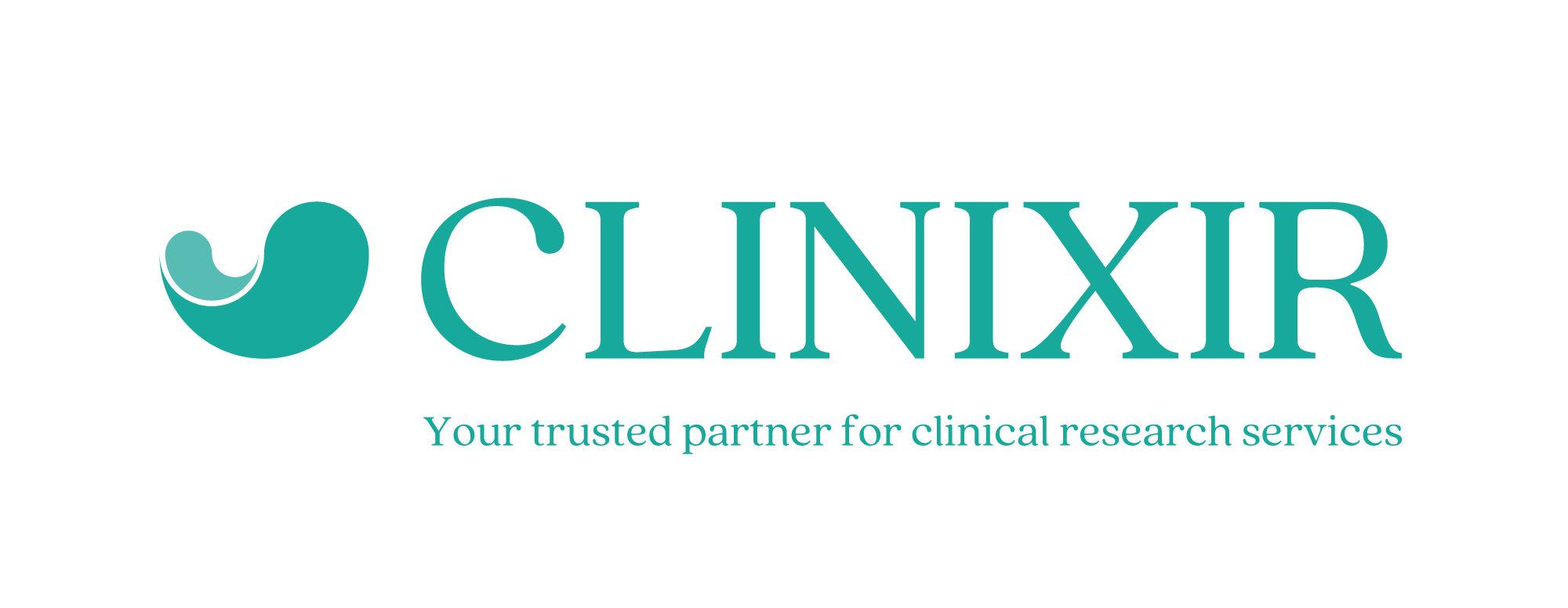The field of cell and gene therapy is witnessing a profound and rapid expansion, with clinical trials globally marking a significant rise in 2024. Clinixir, dedicated to advancing clinical trials in Thailand and Southeast Asia, is at the forefront of understanding these developments. As we explore the trajectory of cell and gene therapy (CGT), we’ll highlight the latest trends and key advancements, and what they mean for patients, researchers, and the industry at large.
The Promise of Cell and Gene Therapy
Cell and gene therapies represent a monumental shift in medicine. Unlike conventional treatments that address symptoms, CGTs focus on modifying genetic material or cellular components to tackle diseases at their root. By altering DNA or deploying genetically engineered cells, these therapies offer potential cures for conditions that have been otherwise intractable, such as certain genetic disorders, cancers, and rare diseases.
In 2024, CGT clinical trials are rising in both number and scope. The rapid growth is being fueled by technological advances, increasing public and private funding, and an enhanced understanding of genomics. With the CGT market forecasted to reach over $40 billion by 2027, the need for robust clinical trials is more urgent than ever to establish safety, efficacy, and scalability.
The Acceleration of Clinical Trials in 2024
Several factors have spurred the growth of CGT trials in 2024:
- Technological Advancements: Innovations in gene-editing tools like CRISPR-Cas9, CAR T-cell therapies, and viral vector engineering have propelled CGT forward. These tools enable precise genetic modifications and enhance the efficacy of therapies. Notably, advancements in non-viral delivery systems, which offer a safer alternative to viral vectors, have expanded the potential for gene therapy applications.
- Regulatory Support and Fast-Tracking: Regulatory bodies, including the U.S. FDA, European Medicines Agency (EMA), and others globally, are expediting approvals for CGT clinical trials. New frameworks, such as the FDA’s accelerated approval pathways and Regenerative Medicine Advanced Therapy (RMAT) designation, are shortening timelines for promising therapies. In 2024, we’ve seen several CGTs receive priority reviews, a testament to regulators’ commitment to advancing these therapies.
- Increased Investment and Funding: Venture capital firms and large pharmaceutical companies are investing heavily in CGT companies. A study by the Alliance for Regenerative Medicine (ARM) shows that CGT investment reached record levels in 2024. This influx of funding has enabled more clinical trials, expanded manufacturing capacities, and increased patient recruitment globally.
- Rising Patient Demand and Advocacy: Patient communities, especially those affected by rare genetic diseases and cancers, are increasingly advocating for more clinical trials in CGT. Many rare disease patient groups have championed increased awareness and policy reform, supporting trial recruitment and driving demand for cutting-edge therapies.
Regional Insights: Where Growth is Happening
North America
North America, especially the United States, remains the epicenter of CGT clinical trials. With advanced research institutions, established regulatory pathways, and significant funding, North America has been leading the way. In 2024, the number of CGT trials has expanded beyond traditional hubs like Boston and San Francisco to states that offer tax incentives and support for biotech research.
Europe
Europe is also experiencing a boom in CGT trials, driven by regulatory alignment across EU countries and substantial investments in biomanufacturing infrastructure. Countries like Germany, the United Kingdom, and France have emerged as leaders, with specialized hubs dedicated to CGT. Europe’s focus on rare diseases and orphan drug development aligns with the needs of CGT, with many new trials targeting small patient populations with critical unmet needs.
Asia-Pacific
The Asia-Pacific region, especially countries like China, Japan, South Korea, and Singapore, has become a major player in CGT. Government initiatives, robust funding, and innovative public-private partnerships are fueling the growth of clinical trials in this region. China, in particular, has made significant strides, with more clinical trials for CAR T-cell therapy in progress than any other country. Meanwhile, Japan and South Korea have adapted regulatory frameworks to facilitate faster clinical trials, focusing on precision medicine and rare diseases.
Southeast Asia
Southeast Asia is emerging as a viable destination for CGT trials, offering a blend of cost-effective clinical trial infrastructure, a genetically diverse population, and growing regulatory alignment. Thailand, through partnerships with organizations like Clinixir, has positioned itself as a regional hub for CGT research. Clinixir’s initiatives to collaborate with international research bodies have increased the region’s visibility and accessibility for global CGT trials, making it an attractive choice for multinational studies.
Challenges Facing Cell and Gene Therapy Trials
Despite the impressive growth, there are several challenges CGT clinical trials face in 2024:
- Manufacturing Complexity and Scalability: Producing CGTs is resource-intensive, requiring highly specialized facilities and expertise. Scaling up production for large populations while maintaining quality remains a hurdle.
- Regulatory and Ethical Concerns: Although regulatory bodies are supportive, gene editing and other CGTs face ethical concerns, particularly regarding long-term impacts on patients and potential unintended genetic changes. Balancing innovation with safety is paramount.
- Patient Recruitment and Retention: Recruiting patients, especially for rare diseases, can be challenging due to small eligible populations and the geographical spread of patients. Additionally, patient retention over the long-term follow-up period required in CGT trials presents an ongoing issue.
Emerging Trends in Cell and Gene Therapy Trials
The rapid growth of CGT in 2024 has introduced new trends that are shaping the field:
- Personalized Therapies: Many CGTs are now being tailored to individual patients, especially for cancers and genetic disorders. Personalized CGTs offer higher efficacy but require highly individualized treatment plans, often posing logistical challenges in trial design.
- Artificial Intelligence (AI) and Machine Learning (ML): AI and ML are playing a vital role in CGT trials, from patient recruitment and selection to predicting treatment efficacy and outcomes. These tools are helping streamline trial processes and reduce costs while increasing the likelihood of success.
- Real-World Data (RWD) Integration: The integration of real-world data, including patient data from electronic health records and registries, is improving the understanding of CGT outcomes outside controlled clinical trial settings. RWD is especially useful in post-approval studies, allowing for long-term monitoring of CGT safety and efficacy.
- Cross-Industry Collaborations: The complexity of CGT trials has fostered increased collaboration between pharmaceutical companies, academic institutions, and contract research organizations (CROs). Collaborative models facilitate shared resources, knowledge transfer, and faster progression of clinical trials.
Looking Forward: What’s Next for Cell and Gene Therapy?
The future of CGT looks promising, with several late-stage trials expected to receive approvals in the coming years. The emphasis on long-term monitoring and follow-up will continue to grow as CGT treatments become more widely adopted. Here are some key areas of focus for the future:
- Expansion to Common Diseases: While CGTs currently focus on rare and severe conditions, there is a growing interest in applying CGT to more common diseases, including cardiovascular and neurological disorders. This would broaden the patient base and amplify the impact of CGTs.
- Global Collaboration and Harmonization: The increasing number of global clinical trials underscores the need for regulatory harmonization across countries. Initiatives like the International Council for Harmonisation (ICH) are working toward standardizing trial guidelines to make it easier for CGT trials to operate across borders.
- Accessibility and Affordability: CGT treatments are costly, and making them accessible and affordable remains a challenge. Industry stakeholders and policymakers are exploring alternative payment models, such as outcome-based pricing and government subsidies, to increase patient access.
Clinixir’s Role in the Future of Cell and Gene Therapy Trials
At Clinixir, we are committed to advancing clinical trials for CGTs and improving patient access to transformative therapies. Our focus on high-quality, efficient clinical trials in Thailand and Southeast Asia positions us to support international CGT research. With a deep understanding of regulatory environments, patient needs, and the latest technological advancements, Clinixir is poised to drive impactful CGT trials that bring life-changing therapies closer to those who need them most.
2024 is shaping up to be a landmark year for cell and gene therapy clinical trials. The rapid growth, driven by technology, investment, and international collaboration, underscores the transformative potential of CGT. As we look to the future, the continued expansion of CGT trials promises new hope for patients and opens new avenues for the treatment of some of the world’s most challenging diseases. Clinixir is excited to be part of this journey, advancing the possibilities of cell and gene therapy for patients worldwide.
References
- BioSpace. 5 Cell and Gene Therapy Decisions to Watch in 2024. Retrieved from https://www.biospace.com/5-cell-and-gene-therapy-decisions-to-watch-in-2024
- CRISPR Therapeutics. Gene Editing. Retrieved from https://crisprtx.com/gene-editing
- Deloitte. Realising the Promise of Cell and Gene Therapies in Asia-Pacific. Retrieved from https://www2.deloitte.com/content/dam/Deloitte/sg/Documents/life-sciences-health-care/sea-lshc-realising-the-promise-of-cell-and-gene-therapies-in-asia-pacific.pdf
- IQVIA. The Diverse CAGT Landscape in Asia-Pacific. Retrieved from https://www.iqvia.com/-/media/iqvia/pdfs/asia-pacific/white-papers/diverse-cagt-landscape-in-asia-pacific_iqvia.pdf
- Lippincott Journals. (2022). Chimeric Antigen Receptor T-Cell Therapy: China. Retrieved from https://journals.lww.com/bls/fulltext/2022/07000/chimeric_antigen_receptor_t_cell_therapy__china.14.aspx
- Marsh. Frontiers: Cell & Gene Therapies Comparative Frameworks. Retrieved from https://www.marsh.com/en-gb/industries/life-sciences/insights/frontiers-cell-gene-therapies-comparative-frameworks.html
- Novotech CRO. (2024). Cell and Gene Therapies: Global Clinical Trial Landscape 2024. Retrieved from https://novotech-cro.com/whitepapers/cell-and-gene-therapies-global-clinical-trial-landscape-2024
- Signals Blog. What’s in Store for 2024: ARM’s State of the Industry Briefing for Cell and Gene Therapy. Retrieved from https://www.signalsblog.ca/whats-in-store-for-2024-arms-state-of-the-industry-briefing-for-cell-and-gene-therapy/



